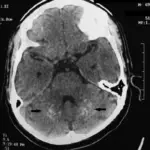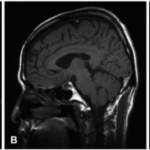Tuberculosis adrenalitis is the result of adrenal mycobacterium tuberculosis (TB) infection.
What is the Pathology of Tuberculosis Adrenalitis?
The pathology of tuberculosis adrenalitis is:
-Etiology: The cause of tuberculosis adrenalitis is a hematogenous spread of tuberculosis to the adrenal gland.
-Genes involved: NA.
-Pathogenesis: The sequence of events that lead to tuberculosis adrenalitis is that it is the result of adrenal mycobacterium tuberculosis (TB) infection.
-Morphology: The morphology associated with tuberculosis adrenalitis shows mass-like adrenal enlargement and smooth adrenal contour that is preserved in the early stage, but later on, adrenal fibrosis and atrophy occur and small adrenals with irregular margins.
-Histology: The histology associated with tuberculosis adrenalitis shows typical, soft, or exudative granuloma, frequently having acid-fast bacilli and hard granuloma, frequently having no acid-fast bacilli.
How does Tuberculosis Adrenalitis Present?
Patients with tuberculosis adrenalitis typically are either male or female present at the age range of 17-72 years (mean age: 40). The symptoms, features, and clinical findings associated with tuberculosis adrenalitis include fatigue and abdominal pain. Other symptoms can include nausea, vomiting, weakness, and low blood pressure.
How is Tuberculosis Adrenalitis Diagnosed?
Tuberculosis adrenalitis is diagnosed with physiological tests for adrenal insufficiency which include plasma/urinary cortisol and ACTH measurement. Biopsy may be obtained as well.
How is Tuberculosis Adrenalitis Treated?
Tuberculosis adrenalitis is treated with isoniazid, rifampin, ethambutol, and pyrazinamide for 8 weeks (intensive phase) followed by 2 drug therapy isoniazid and rifampin for 18 weeks (continuation phase).
What is the Prognosis of Tuberculosis Adrenalitis?
The prognosis of tuberculosis adrenalitis is fair if treated.



